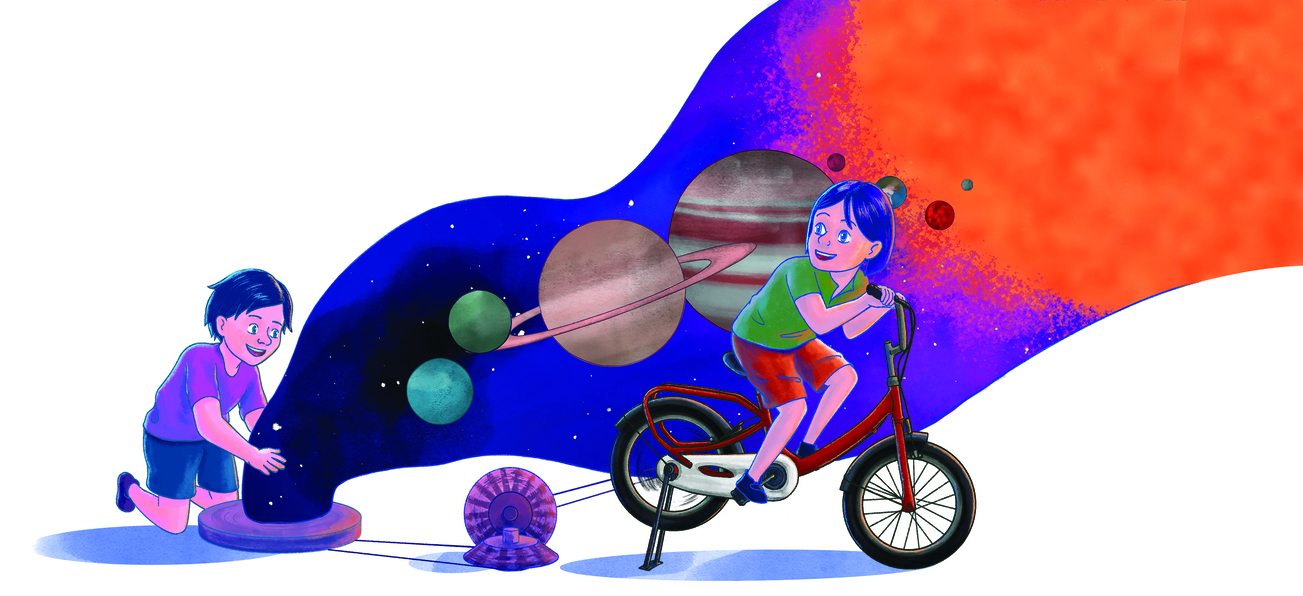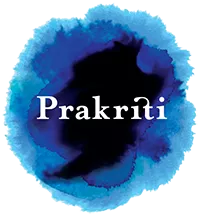
The sudden turn of events in end March when we were just winding up the handing over of qualitative assessment reports to our learners, a labyrinthine and climactic exercise at Prakriti, caught us unaware. Before implementing the remote learning programme, we were apprehensive on the effectiveness of learning, given that we are a highly experiential learning school. We were vary of the screen exposure for young learners and screen fatigue and addiction for the older ones. We took the first steps cautiously with a schedule of classes three days a week. We still have lighter two days with only music and media learning sessions on those days. For the early years, we work in multiple group formats:
A survey with our parents in May reported that most of them preferred the “light” model. Several parents expressed happiness over the transformation in their children with remote learning as they had become organised and independent. The new learning management system brought parents and learners on a single interface with their school diyas. Here’s some of us who have penned down their reflections:
Will teaching ever be the same again?
Views of Meenakshi Didi, English Facilitator, Middle School
“I enjoyed my journey with technology, despite its challenges. I believe teaching will never be the same again. It is possible to create a ‘physical atmosphere, even in a remote learning session.
In just about every area I was able to make my teaching more relevant.
In a poem called ‘The Owl’, I was able to present several images on privilege, deprivation and empathy. Students got to see so many images that their understanding was sharper. I can think of 3 images in particular. One was a poster on Quarantine being the privilege of the rich. The other 2 images were on sympathy and empathy. There were yet other images on the deprivation suffered by migrants in India. Students were able to express in words what the images communicated in pictures.
In another poem called ‘I, too’ by Langston Hughes, we saw over 20 images on racial segregation. Students were able to, in their own sketches, visualise the spaces, say the living room where the coloured could not access.
For an assessment, it was easy to have them watch a Ted Talk video on fantasy, and then answer questions that were presented on screen as well as in the chat window. The answers were submitted in Google classroom, minutes after the activity.
I have been able to talk of symbolism, through images. Students of class 6 and 7 have been able to analyse peers’ answers in simple present tense. I have not felt the power of pictures and technology before.
It is so easy to track assignments and Home Works, as these are posted on Google Classroom. Students know the next day’s Home Works as it is available on Google Classroom. Writing Home Works in diaries is not as foolproof.
Sandeepa Didi, Joy Group (Grade 1)
A change in the way of teaching is indeed visible and noticeable. Visual Learning as a resource is being used quite actively and efficiently during the online classes. This change has made a significant contribution to the teaching learning process. There has been an increase in work efficiency, children are more punctual with their work and other tasks, for instance art and craft work, Hindi worksheets etc. whereas I as a facilitator has become more efficient in assessing children’s work.
Do you miss the physical classrooms?
Views of Aditi and Mehak Didi, Rainbow Group (Grade 2)
Mostly everything! Being in space makes one feel more alive. We miss our Prakriti in every aspect. The children coming through the gate, going to their groups , chit-chatting with their friends , didis and bhaiyas : we miss all of these things. Most importantly, teaching in a physical space. How we used the resources (3D) , our physical space to make our classes more meaningful. The presence of everyone especially children in the school vicinity is a major missing.
Harpreet Didi, Red Group
The opportunities to connect emotionally with children. Today I saw a child crying during my online session but just couldn’t got a chance to connect with her. I would have done more to give comfort to the child, if I was physically present.
Did you find the change overwhelming?
Aditi and Mehak Didi, Rainbow Group (Grade 2)
In the beginning, when we were informed to take online sessions we felt we were not ready for that. We don’t have resources, and also we have to deal with a new set of kids for whom we were unknown, and also how to cater 21 kids through online mode. Having all the technical equipment handy and to be ready to handle the technical glitches that can come during the sessions was another big challenge. However, as we started our journey we received guidance from our mentors, we engaged ourselves in exploration of different resources available online and coordination between the team members even if any technical glitch came helped us in overcoming all the challenges and we all became tech-freaks.
Sandipa Didi (Joy Group, Grade 1)
Initially there was a hesitation and fear regarding how I would be able conduct meaningful online classes, what resources I would use, if the children would be able to connect with me in the virtual session when I haven’t even connected with them physically. Slowly and gradually these fears started to fade and I was able to conduct successful sessions with the children.
In our young learning groups (Red, Pre Nursery – Rainbow, i.e., Grade 2), we follow a flexible grouping approach to engaging:
Whole Group sessions:
Whole Group sessions mean we all come together as a group. These sessions last for 25 minutes. We begin with Om Chants and Gayatri Mantra to calm our minds and to lay a foundation for learning and concentrating. The purpose of these sessions is to assemble as a whole group and set a context for the lesson/topic to be held. The shared classroom expectations are also revised, here. There is less interaction between the facilitator and the children in these sessions. Rather the facilitator uses this opportunity to engage the learners through slides presentation, video tutorials, brainstorming sessions, etc.
Small-Group sessions:
The duration of these sessions is 20 minutes. The whole group is segregated into 3 groups consisting of 5-6 children. In smaller groups, the scope for interaction increases. Small groups act as follow-ups of Whole group sessions. The facilitator builds some activities based on the teaching-learning process that happened in the whole group. These sessions accommodate turn-taking and ensure all children have opportunities to speak. This, in turn, gives them the scope to discuss content, share ideas and problem-solve with others.
Individual sessions/ Bubble time with children:
Each session is 15 minutes long. These sessions provide them with the opportunity to share their thoughts and feelings more freely with their facilitator. As facilitators, it helps us to peep into their emotional and psychological world and to extend the needed emotional/academic support if needed.
Reading Picnics:
The reading picnics aims not only at making them strong readers but also focuses on the pleasure of reading and sharing their favourite book with their friends. Reading Picnics are held in both languages i.e Hindi and English. These picnics are 35 minutes long. There are around 5-6 children in each group. Two children in each group get the opportunity to read and share their world of stories. All the participants act both as speakers and listeners. The group listens to the stories being read-out to them and then share their observations and feedback on the stories and the quality of the narration. This give and take process is then followed by the feedback given by the facilitator.
Music:
This August we started our music sessions with facilitators from Anjuman. Our enthusiastic facilitators are aiming at creating basic understanding of notes and rhythm and enhancing it as they progress. It is really nice to see heartwarming participation from our young learners, who seem so keen on singing various ‘taals’ along with a clap of their hands, as directed by the classical musicians. Not only this, it is a beautiful expression of what is rightly said that ‘there is music in every child’, here we bring for you some beautiful glimpses….enjoy!!
Morning Fitness:
An unstoppable Mamta Didi combines floor gymnastics with yoga and cardio to engage learners from Joy Group (Grade 1) onward everyday. Exercise, even if inside and all by oneself, is the best way to start the remote learning sessions.
